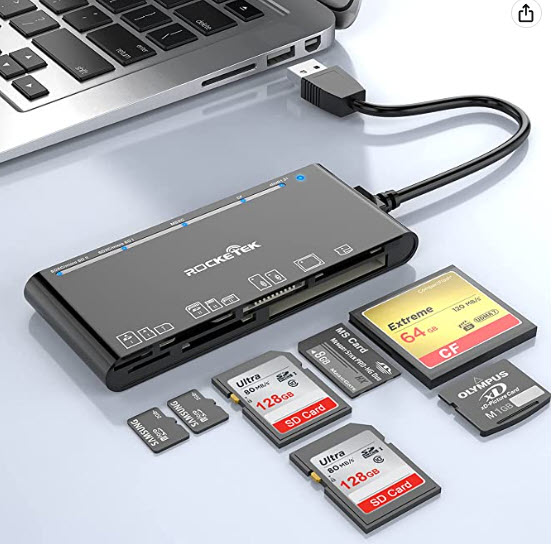What are 9 Ways to Ingest Video – How to get video out of your camera, smartphone or zoom cloud and into your computer for editing.
By Mark Shapiro, Internet Video Magazine

Here are 9 ways to ingest video:
- Connect your camera to your computer via a USB cable. This is the most common way to ingest video, and it’s usually very straightforward. Simply connect your camera to your computer, and then open the software that came with your camera to import the video files. Or, you can copy and paste. For example, if you using Windows and an Android smartphone, you can use File Explorer to find the video files on your phone (usually in the phone’s DCIM folder) and then copy them to the appropriate directory on your computer. Make sure you are using a high quality USB cable – I have found that some of my older USB cables do not support data transfer from a phone to the computer.
Click Here to Get Video Editing Software Deals At Amazon
2.Use a card reader to transfer the video files from your camera’s memory card to your computer. This is a good option if you don’t want to install any software on your computer. Simply insert your camera’s memory card into a card reader, and then drag and drop the video files to your computer. If your laptop does not have any memory card slots, you can get a USB memory card reader. They are not expensive.
3.Use a cloud storage service to upload the video files from your camera to your computer. This is a convenient way to ingest video if you’re not near your computer. Simply upload the video files to a cloud storage service like Google Drive or Dropbox, and then download them to your computer when you’re ready to edit them.
4.Use a smartphone app to transfer the video files from your phone to your computer. There are a number of smartphone apps that allow you to transfer video files to your computer. Simply install the app on your phone, and then connect your phone to your computer via a USB cable. The app will then walk you through the process of transferring the video files.
5.Use a video editing software to ingest video. Some video editing software, such as Adobe Premiere Pro and Final Cut Pro, allow you to ingest video directly from your camera or smartphone. This is a convenient way to ingest video if you want to start editing right away.
6.Use a video capture card to ingest video. A video capture card is a hardware device that allows you to connect your camera or other video source to your computer. This is a good option if you want to ingest high-quality video or if you need to ingest video from a source that doesn’t have a USB port. This is also useful if you are using an older video camera or VCR that does not have an USB out or doesn’t use memory cards to store the captured video. For example, if you are transferring video from an old VHS or S-video camcorder, you may have to use the camcorder’s RCA cables connected to a video capture device. (see image below for S-video and VHS video transfers)
7.Use a streaming service to ingest video. Some streaming services, such as YouTube and Vimeo, allow you to ingest video directly from your camera or smartphone. This is a convenient way to ingest video if you want to share your videos online.
8.Email the video files from your SmartPhone to your computer and then edit them using your editing software. However, this only works if you are working with short, small video files. Just a few seconds or so. If you are dealing with video files bigger than 10Mb or so, many email programs won’t be able to handle them.
9.Use a wireless video transmitter to ingest video. A wireless video transmitter allows you to transmit video from your camera or smartphone to your computer wirelessly. This is a convenient way to ingest video if you don’t want to be tethered to your computer.
Whichever method you select will depend on your specific video equipment and situation. If you’re not sure which method is right for you, I recommend trying out a few different methods and seeing which one works best for you.
